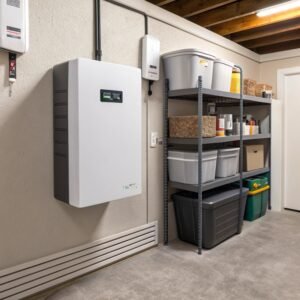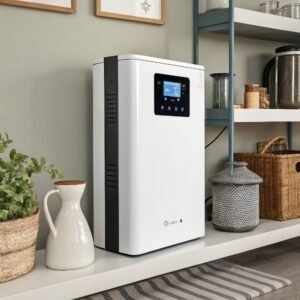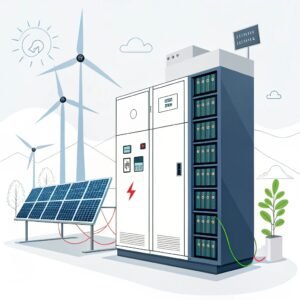How Efficient is Photovoltaic Power Generation?
by
How Efficient is Photovoltaic Power Generation?
You're considering solar panels but wonder - how much electricity can they actually produce? The answer depends on several key factors that affect photovoltaic efficiency.
Modern solar panels typically convert 15-22% of sunlight into usable electricity. The most efficient commercial panels today reach about 22-23% efficiency, while standard models average 18-20% conversion rates.
Transition Paragraph:
Now let's examine what factors influence solar panel efficiency and how you can maximize your system's performance.
What time of day are solar panels most efficient?
Solar panels don't perform equally throughout the day. Understanding peak production times helps optimize your energy usage and storage.
Solar panels are most efficient between 10 AM and 2 PM when sunlight is most direct. Production peaks at solar noon when the sun is highest in the sky, typically generating 80-90% of maximum output.
Daily production patterns:
| Time Window | Efficiency Range | Notes |
|---|---|---|
| 8-10 AM | 60-75% | Rising production |
| 10 AM-2 PM | 85-95% | Peak efficiency |
| 2-4 PM | 70-85% | Gradual decline |
| After 4 PM | Below 50% | Low-angle sunlight |
Pro Tip: Orient panels true south (northern hemisphere) or true north (southern hemisphere) for maximum midday production.
At what temperature do solar panels become less efficient?
Surprisingly, solar panels work better in cold weather. Understanding temperature effects helps predict seasonal performance changes.
Solar panels lose about 0.3-0.5% efficiency per degree Celsius above 25°C (77°F). Most panels are rated at 25°C, with significant output drops occurring above 35°C (95°F).
Temperature impact examples:
| Ambient Temperature | Efficiency Change | Notes |
|---|---|---|
| 15°C (59°F) | +3-5% | Ideal cool conditions |
| 25°C (77°F) | Rated efficiency | Standard test condition |
| 35°C (95°F) | -3-5% | Common summer temps |
| 45°C (113°F) | -6-10% | Extreme heat impact |
Cooling Solution: Install panels with 6-8 inch air gaps underneath to allow natural cooling airflow.
What happens to solar energy when the battery is full?
With battery storage systems, it's important to understand where excess power goes when storage capacity is reached.
When batteries are full, excess solar energy either: 1) Exports to the grid (if connected), 2) Powers additional home loads, or 3) Gets curtailed (wasted) in off-grid systems without diversion loads.
Options for excess energy:
- Grid export: Earn credits through net metering
- Load shifting: Run appliances during peak production
- Diversion loads: Heat water or power other devices
- Smart charging: Prioritize EV charging during surplus
Important: Configure your inverter settings properly to handle excess energy based on your system type and local regulations.
My Insights
After installing solar panels on my own home, I've learned three key lessons about maximizing efficiency:
- Shade is the enemy: Even small shadows can reduce output by 50% or more
- Regular cleaning matters: Dust and pollen can decrease efficiency by 3-5%
- Monitor performance: Tracking daily output helps identify issues early
Conclusion
Solar panel efficiency depends on time of day, temperature, and system configuration. Proper installation and maintenance can help achieve maximum energy production year-round.




